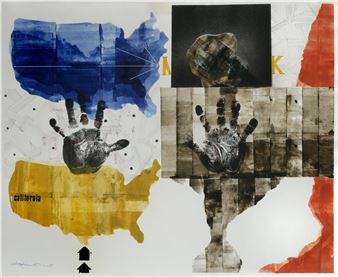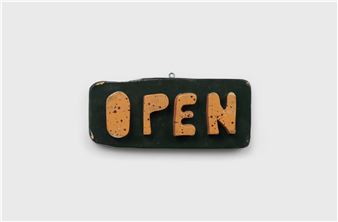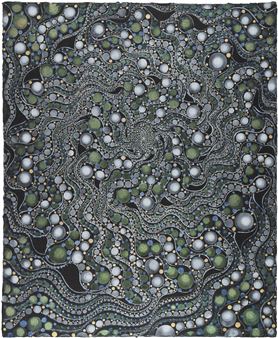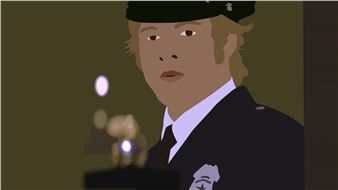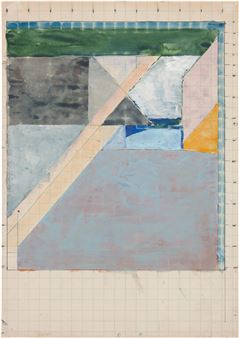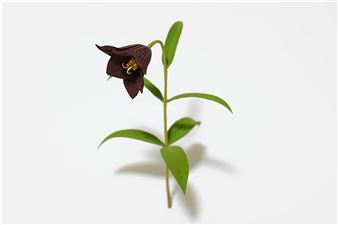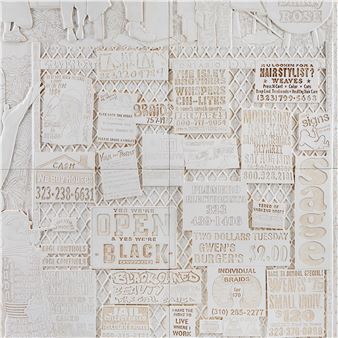Alexis Rockman: A Natural History of New York City
Beginning April 18th, Salon 94 will present A Natural History of New York
City, an exhibition of 75 works on paper by Alexis Rockman that adapts an
unconventional, ancient technique of depicting images of flora and fauna, while
referencing the straightforward approach of a naturalist’s field guide. Created
with organic matter such as fossils, soil, sand and detritus gathered on
streets, parks, construction sites and beaches, the artist’s field drawings
depict and explore the history of life in New York City and its astonishing
biodiversity. The time line spans from the ecology of the fossil record, the
Carboniferous period (360 million years ago), pre-Columbian, Europeans arrival,
and the plants, animals, insects, and birds that make their living here now.
Rockman is perhaps best known for his monumentally scaled, multi-layered
paintings—rich depictions of landscapes that might exist in a future impacted by
climate change and the influence of genetic engineering on evolution. These
interests and his extensive travel experiences become the inspiration for his
field drawings, which the artist likens to calligraphy, pictograms, or
fossils.
For A Natural History of Life in New York, Rockman researched the history of the region’s ecosystems and consulted with Carl Mehling, collections manager of the American Museum of Natural History’s amphibian, reptile, and bird fossils unit, Eric Sanderson, Senior Conservation Ecologist at the Wildlife Conservation Society (and author of the book Mannahatta: a Natural History of New York City) and other local environmentalists and ecologists before choosing the specific sites to collect material to make the drawings. Fossil samples from late Cretaceous in Staten Island (dinosaurs); a mastodon from the Pleistocene at 141St Street and Broadway; Beaver from soil from the Harlem River (an incredibly rich fresh water ecosystem); Turtle Pond in Central Park (home to 5 species of turtles); the beach at Coney Island where Sand Tiger Sharks are captured for the world’s aquariums and Hal the coyote who was captured in 2006 in Central Park. Rockman created delicate yet richly dimensional drawings of these and dozens of other sites in the city in his Tribeca studio, naming them, field-guide style, with their English and Latin titles like Harp Seal Pagophilus groenlandicus Red-tailed Hawk Buteo jamaicensis, Northern Monk's-hood flower Aconitum noveboracense.
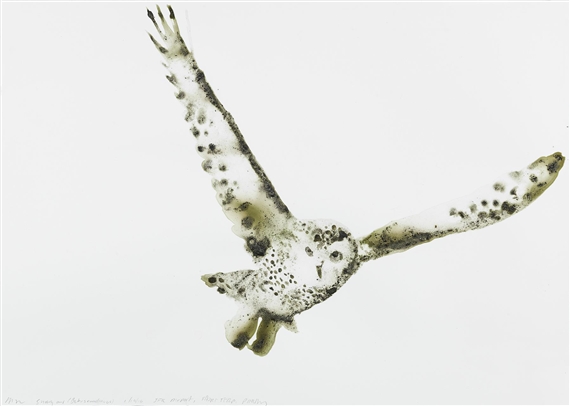
Recommended for you
Beginning April 18th, Salon 94 will present A Natural History of New York
City, an exhibition of 75 works on paper by Alexis Rockman that adapts an
unconventional, ancient technique of depicting images of flora and fauna, while
referencing the straightforward approach of a naturalist’s field guide. Created
with organic matter such as fossils, soil, sand and detritus gathered on
streets, parks, construction sites and beaches, the artist’s field drawings
depict and explore the history of life in New York City and its astonishing
biodiversity. The time line spans from the ecology of the fossil record, the
Carboniferous period (360 million years ago), pre-Columbian, Europeans arrival,
and the plants, animals, insects, and birds that make their living here now.
Rockman is perhaps best known for his monumentally scaled, multi-layered
paintings—rich depictions of landscapes that might exist in a future impacted by
climate change and the influence of genetic engineering on evolution. These
interests and his extensive travel experiences become the inspiration for his
field drawings, which the artist likens to calligraphy, pictograms, or
fossils.
For A Natural History of Life in New York, Rockman researched the history of the region’s ecosystems and consulted with Carl Mehling, collections manager of the American Museum of Natural History’s amphibian, reptile, and bird fossils unit, Eric Sanderson, Senior Conservation Ecologist at the Wildlife Conservation Society (and author of the book Mannahatta: a Natural History of New York City) and other local environmentalists and ecologists before choosing the specific sites to collect material to make the drawings. Fossil samples from late Cretaceous in Staten Island (dinosaurs); a mastodon from the Pleistocene at 141St Street and Broadway; Beaver from soil from the Harlem River (an incredibly rich fresh water ecosystem); Turtle Pond in Central Park (home to 5 species of turtles); the beach at Coney Island where Sand Tiger Sharks are captured for the world’s aquariums and Hal the coyote who was captured in 2006 in Central Park. Rockman created delicate yet richly dimensional drawings of these and dozens of other sites in the city in his Tribeca studio, naming them, field-guide style, with their English and Latin titles like Harp Seal Pagophilus groenlandicus Red-tailed Hawk Buteo jamaicensis, Northern Monk's-hood flower Aconitum noveboracense.
Artists on show
Contact details


 ARTISTS
ARTISTS







